It is early September as I write – spring! Today was over 30ºC, as were quite a few of our supposedly winter days. Brisbane, admittedly, is not overly cold at any time but I have never experienced over 30 degrees on a winter’s day. It has been the hottest one on record, and we are far from alone there.

A densely planted garden does not allow the sun to reach the soil, providing an extra layer of stress protection for the plants.
The up-side of record high temperatures has been a truly glorious winter to be outdoors. The much less comfortable reality is that if that was ‘winter’, what can we expect for the coming summer? For readers in the northern hemisphere I won’t pretend I know how to prepare for cold – I don’t. The lowest temperature my garden ever experiences is 5oC – and that is rare! But I am busy right now getting lots of gardens ready for a potentially VERY hot summer ahead. And reconsidering my outdoors career choice….
Last summer we saw long established plants getting sunburnt. They were getting the same amount of sun they always did, but the sun was just that bit hotter. If this summer is hotter again, it is fairly safe to assume that our gardens will be feeling the extra stress.
As for rainfall, it is exceptionally dry here now but that is not unusual for this time of year. With no prediction of drought ahead, we will hopefully get rain and so, in spite of the extra heat, have plenty to look forward to in the garden this summer.
As climate change sharpens the extremes of our weather, we gardeners become more aware of the plants that are at the very limit of their climate tolerances. For me this spells the end of poppies. I love them and have grown beautiful peony poppies here in the past, but they were hit and miss. Now it is just too hot for them.

I managed to grow these peony poppies very well a few years ago but it is too hot for them here now.

The Wilson’s lilly pilly normally flowers in late October but is in full bloom in early September.
Lots of things are coming into flower early and this brings the realisation that our winter growing season is getting shorter. Here in the subtropics this means winter vegetables and flowering annuals will have less time to do their thing.
This has given me the perfect excuse to look north for garden ideas. I am having wonderful success with some of the subtropical vegetables that Arno King introduced me to – Ethiopian Cabbage being my current favourite.
In the cottage garden I am planting Aphelandras, Justicias and two new trees to replace the old Rose of Sharon – a Sparmannia and a soursop.
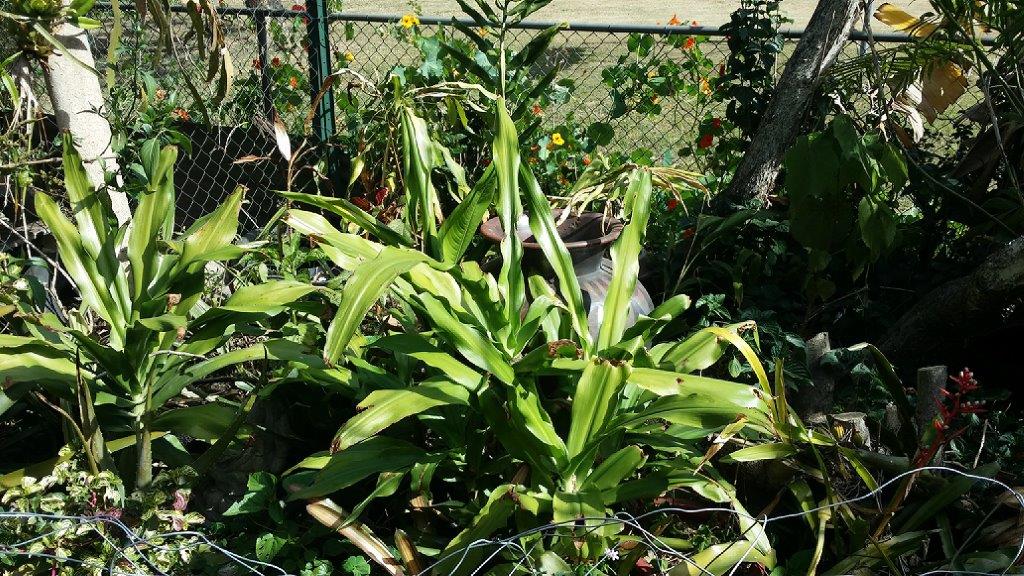
With the Rose of Sharon now gone, there are some very scorched plants in that garden in need of more shelter.
Although I knew the Rose of Sharon needed replacing, I was always too busy. It was looking very much the worse for wear so my ‘dear’ husband decided to tidy the garden, and simply cut it down. This has left the garden below it, planted with shade-lovers, exposed to a hot sun.
My mission this month is to get some shelter into that bed. I am putting in some fast growing sun-lovers, like tall Salvias, which will shelter some of the shade-lovers such as Miss Millie (Schaveria flavicoma), Whitfieldia, Calatheas and Begonias below in the short term. I know this sounds like an odd mix, I will let you know how it goes in a few months time….
Other things simply have to move to a shadier spot. And I will try and enjoy some sun-lovers there in the mean time.
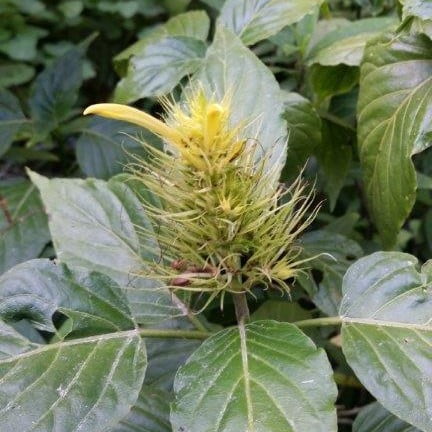
Miss Millie is a shade loving plant that is not going to be happy about suddenly being exposed to full sun.
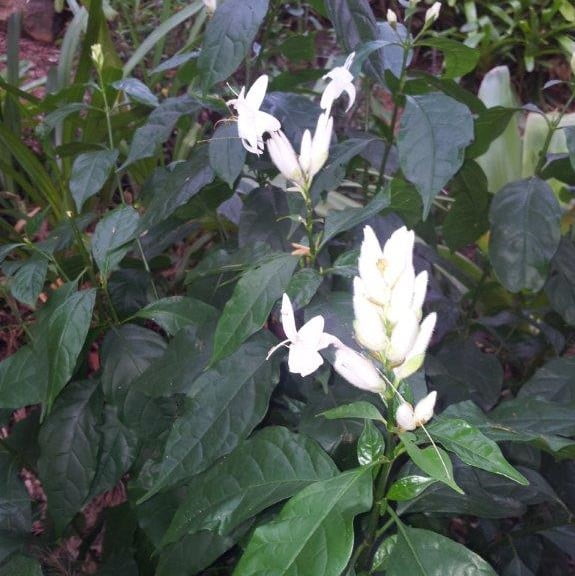
Whitfieldia will need some shelter now it has been exposed to the hot sun.
How many other gardeners are worried about how their gardens will cope with climate change? The first thing to remember is that gardens will adapt – if we as gardeners are willing to adapt with them.
The second thing to remember is that change represents opportunity. Yes, there will be plenty of favourites that will struggle to keep going but with a little inspiration you will find so many new favourites that it could become exciting. But regardless of how positive we may be feeling about a warmer garden, a little preparation is always valuable.

An early hippeastrum in flower. Even plants that normally like full sun appreciate some shade in very hot climates.
Change can cause stress in plants, and the best way to manage this stress is to provide them with the best possible growing conditions. While we can’t change the weather, we can change the micro climates within our own garden, we can improve our soil and we can water sensibly.
Soil
I am preparing my soil by adding rock minerals which are high in silica, followed by organic mulch. The rock minerals will add all the major and minor nutrients needed (with the exception of nitrogen) for balanced growth, leading to stronger more resilient plants. Silica is highly effective for improving the structure of the soil, which in turn improves the water holding capacity of the soil. Silica also plays a role in plant health by creating stronger plant cells. By using a product with added microbes, I am creating healthy soil which provides for long term plant health.

Rock minerals and organic mulch ready to be put on and take some of the stress off the garden.
Mulch
Organic mulch will help to add organic matter to the soil, as well as play a very important role in protecting the soil from erosion and moderating its temperature. Un-mulched soil in full sun can be as much as 10oC hotter at a depth of 30cm on a hot summer’s day, compared to mulched soil. That is a very significant difference for the plant roots in that soil, not to mention the soil biota which supports healthy plant growth. If your issue is the cold, the mulch works in reverse – mulch the soil before snow fall to keep greater warmth in the soil.
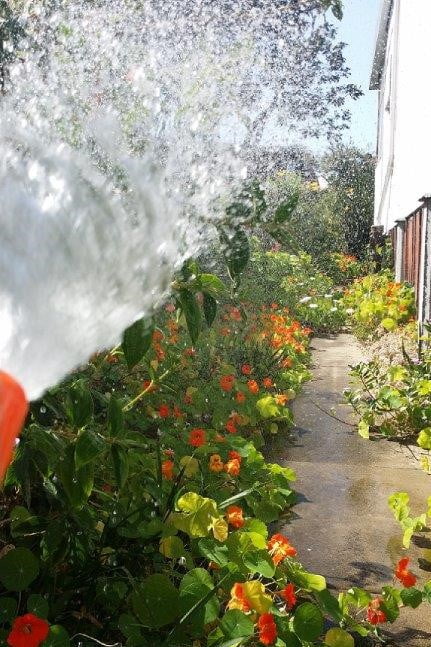
Hand watering usually results in a shallow watering unless we are very patient. It is usually more efficient to use a sprinkler on a timer where water restrictions allow.
Water
The way we water the garden also makes a very big difference. Quite simply, the deeper we water the deeper plant roots will travel seeking out that water. This then places plant roots at a deeper level in the soil where they will be less subject to drying out and less stressed by temperature changes.
By contrast, shallow watering will encourage plant roots to stay in the top few centimetres of the soil. I have seen gardens killed by shallow watering. One or two very hot days are enough to cause so much stress to the shallow roots that the plants are unable to recover.
The other big thing we can do is to look at the micro climates in our garden and manage them thoughtfully. Large areas of hard surfaces, such as concrete driveways, while very useful can reflect a lot of heat onto the house and also the surrounding garden.
Similarly brick walls can hold a lot of heat that gets reflected back onto plants growing in front of them. In these areas consider growing plants that will love that extreme heat, or consider careful placement of a small shade tree. The shade tree might just also help keep the house cool and make you more comfortable.
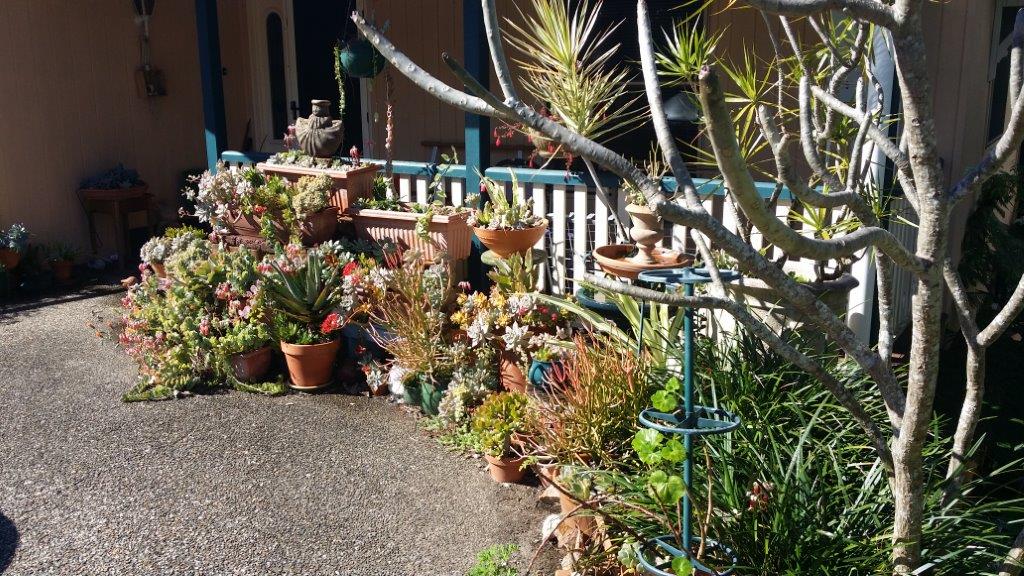
This garden of potted succulents copes well with the added reflected heat from the concrete driveway but also helps to block some of that heat being reflected straight into the front of the house. The frangipani will be in leaf soon and provide additional shade over the concrete.
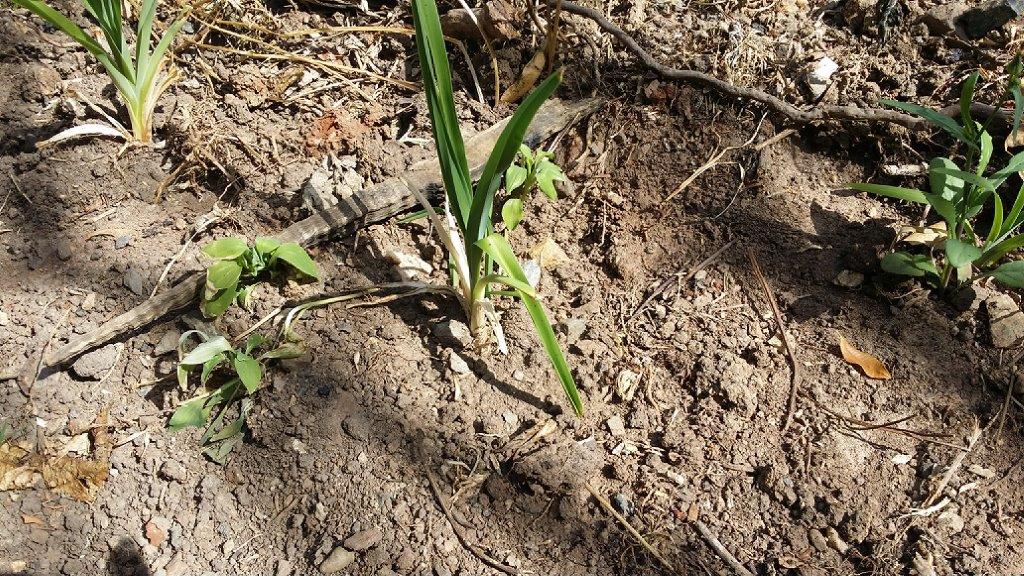
Bare soil not only dries out faster but is much hotter, creating additional stress for plants.
A densely planted garden does not allow the sun to reach the ground. In this way the tops of the plants are in the sun and hopefully flowering away happily, with a shade layer beneath insulating the soil. This can have a very significant difference on evaporation rates, temperature of the soil, and the air around the base of the plant. Humidity sensitive plants won’t like this, but for anything else it can be a key factor in the success of a garden through difficult times. It has been a major influencing factor in my garden for many years and is a principle I hold dear.
For this reason, I am currently filling any gaps with cuttings struck from existing plants in my garden. This gives me a double-up in case I lose something (back-up plants), gives me a sheltered and protected garden at ground level, and gives me a delightfully full garden with much aesthetic appeal.
Hopefully with these preparations in place, my garden can flourish through a hot summer, and it can offer me some delightfully shady spots of respite to recover from a hot days work.
